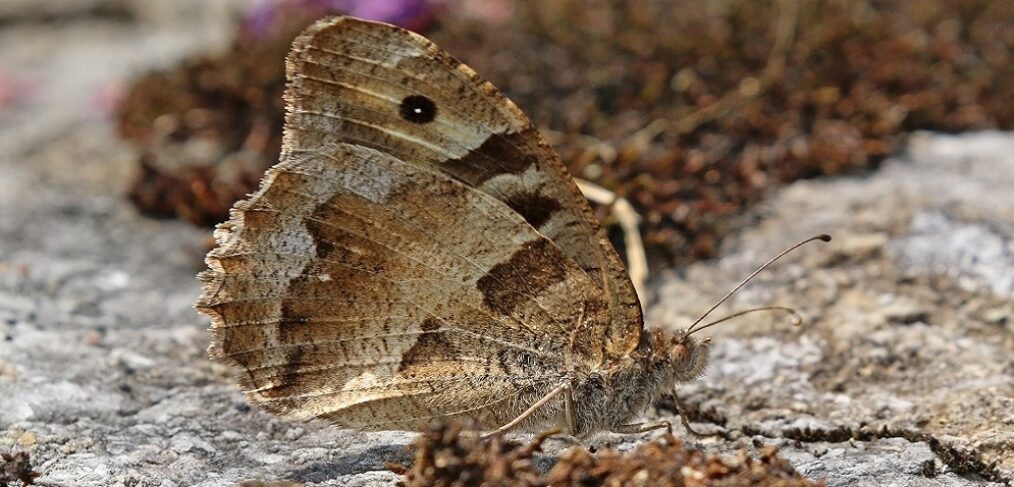
Species of the week #120 – Hermit
Today we introduce you to the hermit. His german name Berghexe means Mountain witch in english. A butterfly that appears next to you out of nowhere and can scare you terribly. Thanks to its perfect camouflage, the Hermit is almost invisible in its habitat, steep, rocky mountain slopes. There it can sit in the sun for hours. When it does move its wings and flies away just above the ground, you wonder how long it has been sitting next to you.
| Distribution status in Rhineland-Palatinate | extinct |
| Remaining deposits | Franconia, Rhön, Alps |
| Last sighting | unknown |
| Habitat | Steep, stony calcareous grasslands |
| Threat | Scrub encroachment, building development |
During the main flight season – end of July to beginning of September – this rather inconspicuous butterfly with its cream-coloured band on the dark brown upper side can also be recognised by its fast-sailing flight close to the ground. It often sits down suddenly on stone slabs and rubble and folds up its wings. In doing so, the underside of the wings is so perfectly adapted to the stony surroundings that an untrained observer can no longer distinguish the moth from the ground.
Its preference for steep, meagre slopes with low vegetation and lots of rubble is the main reason for the extinction of the Hermit in Rhineland-Palatinate. This is because these habitats are cultivated or become overgrown with bushes. The high concentrations of nitrogen oxide in the air fertilise the meagre grasslands and hawthorn, blackthorn and other plants can colonise the otherwise too nutrient-poor site.
The declining grazing livestock, especially of old robust livestock breeds, also prevents the bushes from being eaten in time. This leaves the Hermit no free area for its extensive sunbathing and the food plants of its caterpillars are also being pushed back.
One of the aims of the large-scale nature conservation project “Thüringer Rhönhutungen” is to preserve precisely these habitats. Intensive grazing with sheep and goats can prevent the scrub encroachment of dry limestone grasslands and preserve the character of the Rhön as a “land of open distances”.
Politically necessary:
- Promotion of extensive grazing
- Reduction of nitrogen inputs into air and water
- Better protection of biotope areas from development
Click here for more exciting species of the week
Photo : By Charles J. Sharp – Own work, from Sharp Photography, sharpphotography.co.uk, CC BY-SA 4.0, https://commons.wikimedia.org/w/index.php?curid=82230471
